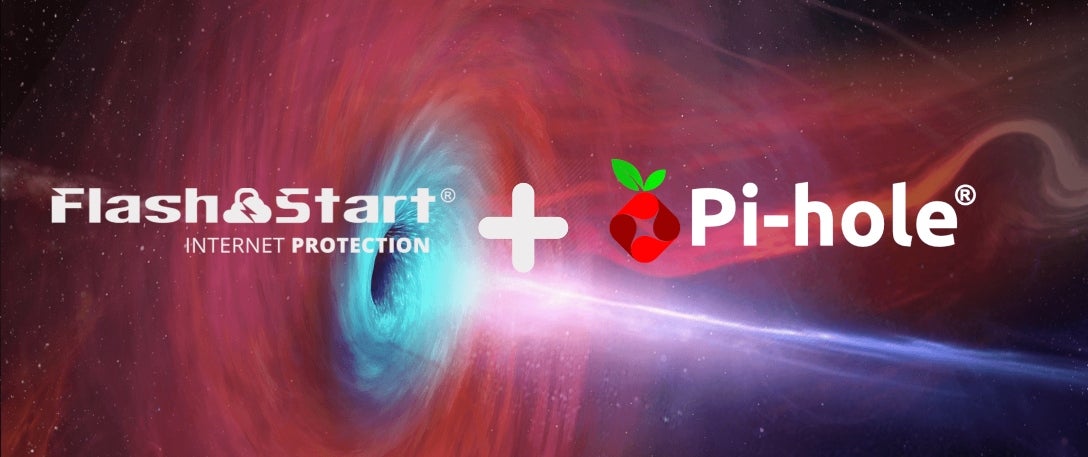
Pi-Hole DNS Server
What does a Pi-hole do?
Pi-hole is a DNS-based filtering tool that you can set up in order to block DNS requests. It was designed by Linux specifically to block advertisements and is intended for use on private networks.
The name Pi-hole stems from the fact that it was meant to be used on a Raspberry Pi. A Raspberry Pi is a very small computer, the size of a credit card, that can be connected to a monitor and keyboard and used for hundreds of activities. It is charged with a USB device and the operating system it uses is Linux.
Although Pi-hole was originally designed to work on a Raspberry Pi with Linux, it can now be installed and used on a virtual machine or on your own hardware. Also, it currently works on other systems as well. In particular, the Pi-hole website reports the following supported operating systems: Ubuntu, Debian, Fedora, CentOS.
Here is some of the content Pi-hole blocks:
» advertisements
» known tracking services
» known malicious websites
» session replay
» adult websites
» ….anything else you’d rather not see on your system!
How does Pi-hole work?
Traditional ad-blocking tools work from within your web browser: they analyze incoming data received by your device when you load a website and remove or replace contents that are recognized as advertisements. They don’t however block advertisements within apps.
You will notice this when you open a mobile gaming application or a news app. This is because when you open these applications they send a request to the url of the server managing the ads for that app. More specifically, the router’s specified DNS provider looks up that url and replies to the device with the ip address of that server so that it can load the ads.
Pi-hole stands in-between the DNS provider and your device and works as a DNS sinkhole:
» First, it stops the request for advertisements sent by the app you are using
» Then, it replies with an unspecified address, which is like telling your phone that the ad server does not exist.
How do I use Pi-hole as a DNS server?
You can set up Pi-hole either on your individual computer/device or on your router as a whole network-wide application. In order to install a Pi-hole you need:
» Your home router, meaning the internet router where you are running things through. Alternatively, you can also use a network switch set up with its own DHCP server, but the installation process becomes more complicated.
» A Raspberry Pi: the best ones to use are those with several USB ports since you can hook the devices you need in order to make it work – a monitor, a keyboard, a mouse, an ethernet cable.
Once you have your basic equipment, you can install Pi-hole directly from the Pi-hole website: you don’t need to download it, you can simply get it using a get command and following instructions.
Pi-hole relies on third-party lists in order to block ads. The installation process allows you to select one or multiple blacklists you’d like to apply from a pre-set list. After installing Pi-hole, you can also add your own blacklists.
Does Pi-hole protect?
So, can you use Pi-hole to protect your devices from external threats and undesired contents? The answer seems to be yes since Pi-hole is a proven tool at blocking undesired ads. However, there is a big BUT: with Pi-hole you will need to do a lot of work manually. This is because, as mentioned above, the tool does not produce its own blocklists, it rather applies blocklists provided by third parties, which are usually not as specific as you might want them to be when you are trying to protect your home network and the people using it.
Moreover, Pi-hole was originally born to block ads, which is what it is good at. However, it does not grant you it will block also malicious contents that appear as click-on links on the websites you are navigating.
This is why it is preferable to use Pi-hole together with FlashStart, the cloud-based web filter that grants you full protection not only from undesired contents but also from proper threats.
Pi-Hole and FlashStart: as an upstream provider: together to grant full protection
If you activate FlashStart and then configure the DNSs it provides you into Pi-Hole you will enjoy a 360° protection and will be able to exploit the strengths of both. FlashStart has several advantages:
» It provides a great number of pre-set blocklists that include malware, trojans and phishing attempts but also adult and distracting contents (social networks, online shopping platforms, …)
» The blocklists are automatically updated: new threats are detected using a combination of human skills and artificial intelligence, they are then added to the cloud and the updated blocklists are automatically available for all users;
» It can be customized differently for different users: FlashStart allows you to activate blocks for specific user groups (for example you may not want the children’s devices to access online gaming platforms) and to schedule them (for example you may want to block access to social networks at night or during working hours).
Configuring FlashStart’s DNSs as upstream DNS Providers for Pi-hole is absolutely simple and takes just one minute. All outbound DNS traffic, after being managed by Pi-Hole, will be routed to FlashStart’s global anycast network to grant an additional security layer against malwares and unwanted content. FlashStart supports DNS queries from both public static and dynamic IP addresses. (Link to setup guide – on close release)
FlashStart protects you from a wide rage of threats and prevents you from accessing malicious websites.
Start your free trial now and enjoy a safe web experience!
If you have already activated FlashStart, please read this guide which explains how to extend
the Blacklists for Internet DNS filtering.
F.A.Q.
» What does Pi-hole do?
Pi-hole blocks ads and undesired contents from showing up on your screen, both when you are navigating on the web and inside an app. Read more here.
» Is Pi-hole bad?
It is not bad at all but it’s a highly specialised tool that works well to block ads. If you want to block also malicious contents you should use it together with FlashStart. Read more here.
» Do websites detect Pi-hole?
Not all websites do, but the ones that make the most use of advertisements are also trying to make sure their ads get seen, so more and more websites are becoming good at detecting it.
» How do you get into Pi-hole?
You can access the dedicated website here and click on the get button: you don’t need to download anything, it will redirect you to the installation procedure.
» Can Pi-hole stop Youtube ads?
Yes it can, but if the ads are provided by urls that change frequently, you will have to keep track of the changes manually and add them to your personal blacklists.
» How can I tell if Pi-hole is working?
You can either do a practical check by connecting to a website that you know traditionally has many ads or you can open the Pi-hole settings and see how many and what type of ads it has blocked.
» How many devices can Pi-hole handle?
Pi-hole can be installed directly on most devices or at the router level so as to provide protection to all the connected devices. Read more here.
» Does Pi-hole block Facebook tracking?
Yes it does, although Facebook does not like being Pi-holed and it is easy to work around Pi-hole for example by creating ads that look like posts and are hence difficult to detect. Read more here.
» Does Pi-hole increase performance?
A major advantage of using trackers and blockers is that if these are blocked you are potentially saving CPU cycles and power. Read more here.
» Is Pi-hole CPU intensive?
Pi-Hole is not generally considered too CPU intensive. In some cases, however, hostname resolution could be slow and take up more time and energy than expected. Read more here.
You can activate the FlashStart® Cloud protection on any sort of Router and Firewall to secure desktop and mobile devices and IoT devices on local networks.
> For more information click here
> For a free trial click here
> To request a quote click here







